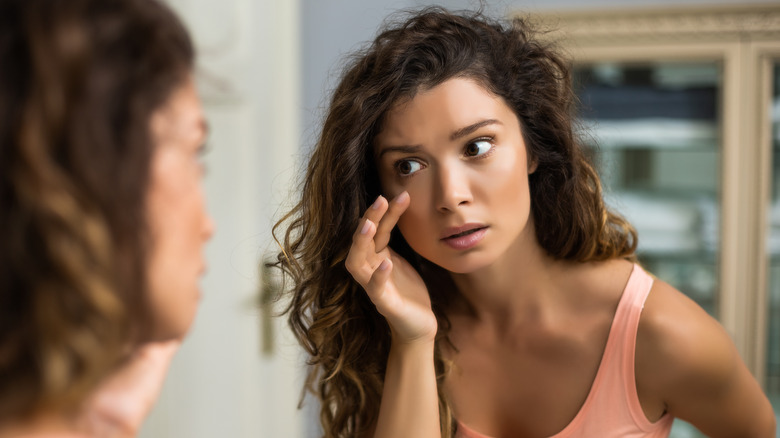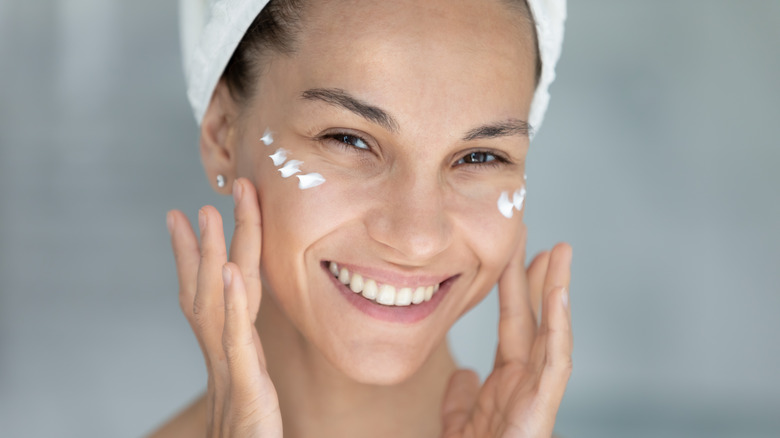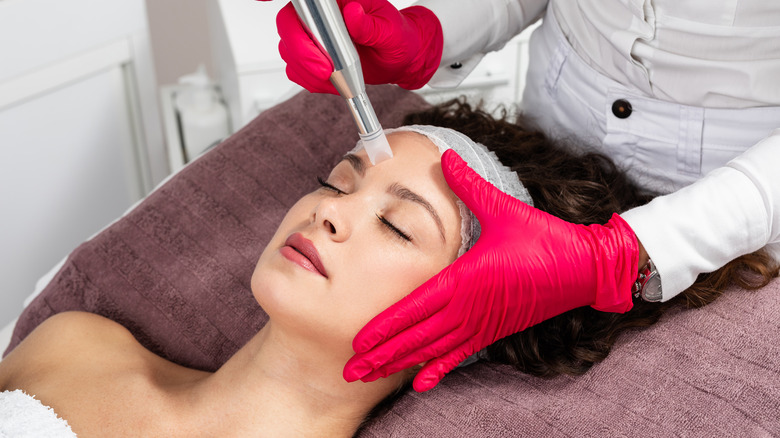How To Get Rid Of Fine Lines Around Eyes
Wondering how to get rid of the fine lines around your eyes? Unfortunately, wrinkles and fine lines are a normal part of aging. Eye creams and serums may help to some extent, but they cannot reverse the aging process. In the best-case scenario, these products can minimize fine lines and improve skin appearance. Your diet and lifestyle habits matter, too. For example, smoking increases oxidative stress and affects collagen production, causing premature skin aging. On top of that, it may contribute to acne, hair loss, and skin cancer, reports a 2017 review featured in the Journal of Dermatological Science.
The fine lines around your eyes are called periocular wrinkles and can affect both the upper and lower eyelids. These are the first wrinkles to appear on a person's face, explains a 2017 review published in Plastic and Reconstructive Surgery. One reason is that the skin in this area is about 40% thinner compared to the skin on the rest of your body, says dermatologist Dendy Engelman (via Oprah). Facial movements and expressions play a role as well.
Botox injections can diminish the appearance of periocular wrinkles, but there is a risk of complications. Ablative laser therapy isn't safer either, according to the Plastic and Reconstructive Surgery review. Luckily, it's possible to reduce the fine lines around your eyes without resorting to Botox or surgery. Use the tips below to achieve younger-looking skin and stop the aging process in its tracks.
Fill up on antioxidants
Vitamin A, vitamin C, and other antioxidants can slow down aging and boost skin health. Carotenoids, for instance, protect your skin from ultraviolet (UV) radiation, notes a 2012 review featured in the journal Dermato-Endocrinology. These include beta-carotene, retinol, lycopene, and other vitamin A derivatives and can be found in most fruits and vegetables. A skin-friendly diet should also include polyphenols, a class of antioxidants that may reduce UV-induced skin inflammation and delay aging.
Another key nutrient is coenzyme Q10, a vitamin-like substance that fights oxidative stress. It occurs naturally in fatty fish, whole grains, and organ meats, but it's also available in supplement form. Essential fatty acids, curcumin, resveratrol, and botanical extracts, such as apigenin and silymarin, exhibit antioxidant and anti-aging properties, too. These nutrients are found in fresh fruits, leafy greens, nuts, seeds, green tea, and other whole foods.
For example, acai berries are rich in vitamin C and antioxidants that may help reduce wrinkles and fine lines, said celebrity facialist Joanna Vargas in an interview with Eat This, Not That! Garlic, cinnamon, salmon, blueberries, avocado, and citrus fruits are just as beneficial. Vargas also recommends celery and cucumbers. "They both contain silica, an ingredient that boosts moisture and elasticity," she told Eat This, Not That! Other foods and beverages, such as turmeric and green tea, protect against collagen damage and may improve skin texture.
Harness the power of retinoids
Tretinoin and other retinoids are vitamin A derivatives that may reverse skin aging. When applied topically, they stimulate collagen synthesis and counteract the harmful effects of UV radiation. These compounds can also unclog your pores and reduce acne breakouts, explains the American Osteopathic College of Dermatology (AOCD). Retinol and tretinoin are particularly effective against wrinkles and fine lines, but they may also reduce hyperpigmentation.
Dermatologic surgeon Ellen Marmur told Vogue that women may start to use retinol in their mid-20s or early 30s. Ideally, choose a low-potency formula containing no more than 0.01% to 0.03% retinol and apply a tiny amount twice a week. "Retinol can be very irritating if used too frequently or if the formulation is too strong for your skin," warns dermatologist Whitney Bowe, per Vogue. Plus, it can dry out your skin and cause redness, itching, or flaking, according to the AOCD. For this reason, it's best to stay on the safe side and make sure you don't go overboard.
As a general rule, avoid using retinol on the day before you exfoliate your skin. Both procedures are irritating and can make your skin super-sensitive, cautions Bowe.
Try microneedling and facial massages
In addition to facial creams and serums, you may try microneedling to diminish those pesky lines around your eyes. This cosmetic procedure involves using small needles to puncture the skin. When done right, it can lead to a more youthful appearance by stimulating collagen and elastin production. Simply put, it creates micro-trauma to the skin, which in turn, promotes the formation of collagen-rich tissue, notes WebMD.
The downside is that it takes time to work and may cause local reactions, such as pain, redness, and bleeding. There's also a risk of infection and scarring, but these side effects are rare. For longer-lasting results, combine microneedling with radiofrequency or platelet-rich plasma (PRP) therapy. "Microneedling with radiofrequency uses the added technology of flow needles to deliver radiofrequency energy into the dermis," dermatologist Mona Gohara told Elle.
If you prefer a less invasive treatment, try facial massages. Apply a small amount of anti-aging cream or facial oil to the fine lines around your eyes and then gently massage the area. "Use your index fingers to apply pressure on your nose's bridge, right below the inner eyes," suggests esthetician Sonya Dakar (via Byrdie). "Do this for five seconds at a time for a total of three sets." Another option is to use a gua sha stone to massage the area around your eyes. The results won't be as dramatic as with microneedling or Botox, but at least you don't have to worry about bruising and other side effects.



